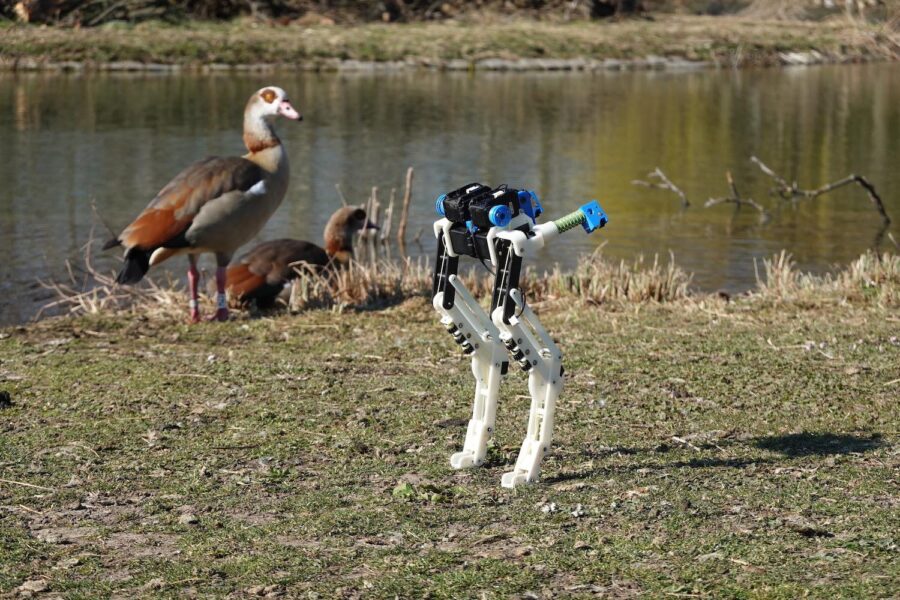See The Terrifying New BirdBot Robot
A brand-new bipedal robot has been constructed, and quite frankly, it's quite terrifying. The new BirdBot might be something out of nightmares.

You’ve seen Boston Dynamics robots that dance on two legs and the more dog-like automatons that run on four. You’ve seen plenty of movies that depict androids like Terminator or Blade Runner. But have you seen BirdBot? BirdBot is the creation of Alexander Bardi-Spröwitz, Monica Daley, and members of their lab and it’s designed to give us a better bipedal robot. You can see the Birdbot below:

Alexander Bardi-Spröwitz is an engineer who set out to make a robot based on the biology of a bird. He found the veterinary scientist Monica Daley to combine her expertise in animal biology with his engineering and robotics skills. And thus, BirdBot was born. The robot uses the observations of bird movement and biology to make a robot that is more agile on its two feet while also having more balance in dense or rough terrain.
One of the challenges of creating a bipedal robot is the harsh pressure from every impact the foot makes on the ground. As Bardi-Spröwitz explains, the force of a running foot hitting the ground can be up to three times the weight of the runner, and walking can be 1.5 times the weight. The other challenge of creating the BirdBot is taking this force into account while also making sure it can balance on one foot when the other is leaving the ground to step forward.
To fix that issue, the BirdBot uses a spring-loaded system that quickly transitions the robot’s legs from an extended position and a flexed position. The robot also uses a five-joint system that mimics the movement that is like an ostrich. Unlike humans, whose muscles and tendons can only spread over two joints, bird biology allows these muscles and tendons to connect to five joints. By designing this into the structure of the BirdBot, the team was able to make the robot handle terrain and stay upright.
This five-joint system is advantageous to BirdBot. It removes the need for complex pressure and balance sensors that add bulk and complications to the build of the robot. This allows the BirdBot to scale in size more easily and use up to 75% less power when you compare it to robots that are around the same size.
While you may be creeped out by the BirdBot, it has a lot of very useful potential, according to Bardi-Spröwitz. He hopes that the robot will be able to help with forestry and sustainable agriculture. Robots with wheels often have trouble or can’t operate at all on rough or uneven terrain. Bardi-Spröwitz believes the BirdBot will be able to weed intercultural farms, locate downed trees in dense forests, and more. Currently, the BirdBot has room for improvement, so it may not be quite ready for these uses cases. The robot is unable to move sideways, only moving forward and backward at this point. However, Bardi-Spröwitz hopes to make improvements to the robot soon. So, if you happen to see a BirdBot waltzing around a farm or forest near you in the future, don’t freak out. It’s friendly! Probably.












